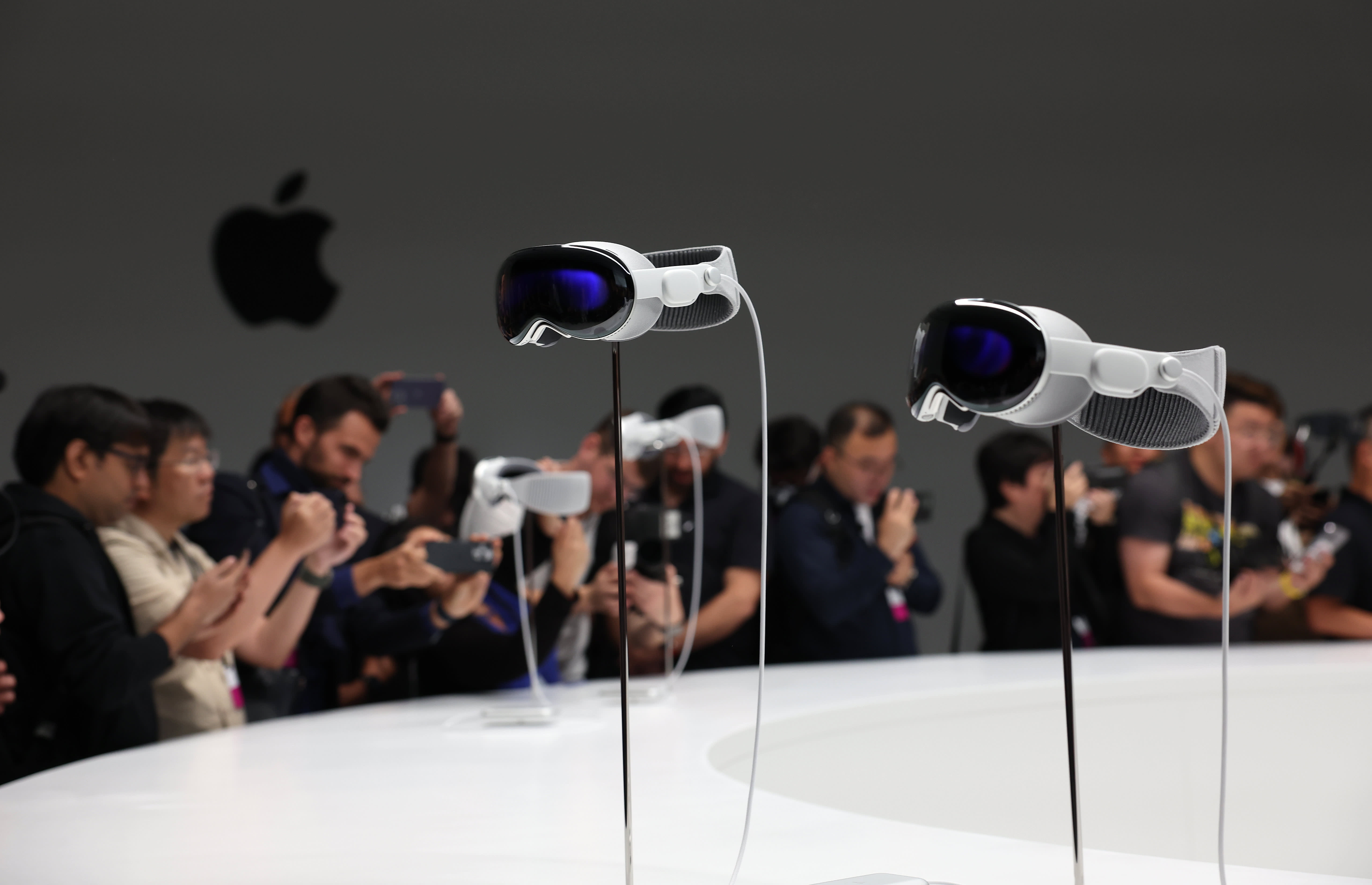Apple’s mixed-reality headset debut marks a “watershed moment” for the industry, said the executives of some major players in the augmented and virtual reality space as they welcomed competition for the U.S. tech giant.
Apple launched its Vision Pro headset at its annual WWDC event on Monday, ending months of speculation that the Cupertino tech giant was getting ready to launch its own VR or augmented reality product.
related investing news
Cher Wang, Taiwanese tech giant HTC’s CEO, told CNBC that she sees Apple’s move as a validation for the industry. HTC has long been a mainstay of the virtual and augmented industry, pivoting from its ailing smartphone business several years ago to focus on its Vive headsets division.
“Apple’s entry into the market is a watershed moment for the industry, and a big validation of everything HTC VIVE has been working on,” she told CNBC. “This will bring even more confidence in the global market for VR.”
However, she added that the “closed” nature of Apple’s services ecosystem — which is more restrictive when it comes to the platforms and devices through which users access its services — is problematic.
“Apple has historically used a closed ecosystem for their iOS products and content distribution platforms, which could be limiting for developers in a new value chain. If developers are locked into one ecosystem, it’s difficult for them to maximize their reach.”
Apple says the Vision Pro will allow users to see apps in a new way in the spaces around them. Users can use their eyes and hands to navigate through apps and search with their voices.
With the headset, users can watch movies, including in 3D with spatial audio, view their own pictures or videos, and play video games. It can also be used for work through videoconferencing apps such as Microsoft Office tools and Adobe Lightroom.
Vision Pro will run on visionOS, a new spatial computing platform designed specifically for the company’s new headset to enable developers to build apps like they would for iOS on the iPhone. It will be available starting at $3,499 beginning early next year.
‘Important moment’
To be sure, the reaction from the crowd to Apple’s AR headset was more muted than its response to other announcements from the firm earlier in the day, including new features for its iPad and Apple TV Siri Remote.
“The next paradigm shift will happen when these devices are fully integrated with 5G technology, and are streaming content from a Cloud Edge network,” Wang told CNBC.
“HTC VIVE has already invented this technology, and we will lead this paradigm shift in the near future.”
HTC has pivoted over the years from an expertise in smartphones to increased focus on VR, as it struggled to win traction in the highly competitive handsets market.
In 2018, the Taiwanese firm sold most of its smartphone business to Google for $1.1 billion.
The VR industry has long struggled to be taken seriously, with consumers mainly looking to it as a way of playing casual games rather than a device embedded in their everyday lives.
Meta, formerly known as Facebook, has staked its whole future on the idea that people will engage in virtual worlds through VR products like its Meta Quest line of headsets and Horizon Worlds VR social game, in a network of vast virtual worlds known as the “metaverse.”
But Meta hasn’t yet found broad commercial appeal for its product — it is losing billions of dollars on its investment into the technology each year.
Sales of VR headsets have underperformed lately, particularly as consumers are grappling with a sharp rise in the cost of living.
Research group NPD Group told CNBC last December that sales of VR headsets in the U.S. declined 2% in 2022 from a year earlier, to $1.1 billion.
It’s more of a surprising launch for a company like Apple, which has typically stuck to waiting for a product to get mass adoption before it enters a product category.
Nevertheless, industry executives said the launch marked a significant milestone for the nascent mixed reality market.
It signifies how mixed reality is likely to have more viable use cases in the business-facing side of things, said Urho Konttori, chief technology officer of Finnish Varjo, in an emailed comment.
“Apple’s entrance into XR with Vision Pro is an important moment for our whole industry,” Konttori said.
“Mixed reality is already a fixture in the enterprise sector, and the innovative technologies pioneered by Varjo have changed the way the world’s biggest companies work, train, design, conduct research, and collaborate.”
“We hope today is the turning point for consumers when it starts being part of their everyday lives too, with promising applications for entertainment, personal productivity, and communication,” he added.
Leo Gebbie, analyst at CCS Insight, said, “Even though it won’t launch until early 2024, we expect that the Vision Pro will transform the spatial computing segment, thanks to some of Apple’s design decisions and its innovative visionOS.”
“Virtual and augmented reality (VR and AR) have been through a period of intense scrutiny and scepticism in recent times but if one company has the star power to revive the segment, it’s Apple,” he added.
— CNBC’s Kif Leswing, Ashley Capoot and Rohan Goswami contributed to this report






